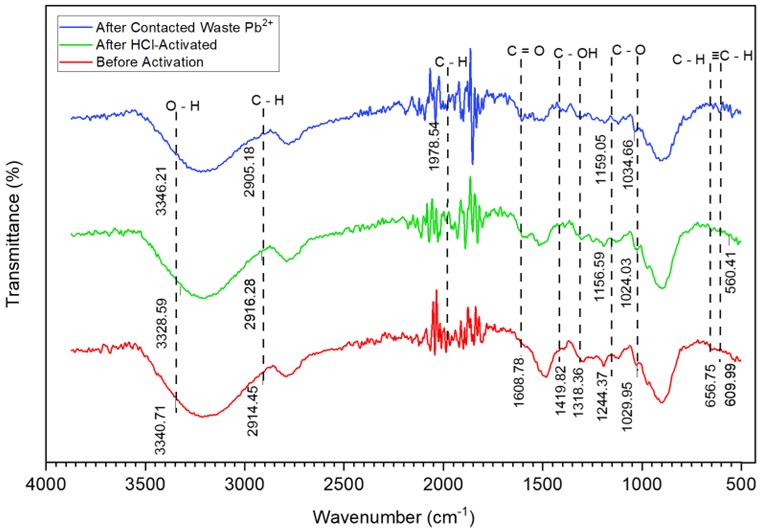Characterization of HCl-activated Water Hyacinth (Eichhornia crassipes) Adsorbent in Removing Lead Ion (Pb2+) from Battery Industry Effluent
Abstract
This study utilizes the adsorption process to reduce the concentration of lead ions in battery industry wastewater by using adsorbents from water hyacinth (Eichhornia crassipes). This research aims to determine the ability of a bioadsorbent activated by a 0.1 M HCl solution to adsorb Pb2+ through FTIR and AAS characterization. The bioadsorbent was contacted into a standardized solution of Pb2+ with varying contact times (viz., 20, 30, 40, 50, 60, 70, 140, 210, and 280 to determine the maximum adsorption). The highest absorption of the Pb2+ in battery industry wastewater took place for 210 minutes. The absorption ability was 94.45%, with 8.1488 ppm as the initial concentration. Then, this study shows that this characterization before the activation of 0.1 M HCl has O-H, C-H, C=O, and C-O ether functional groups. All three identified the presence of cellulose. Post-activation, lignin, and hemicellulose disappeared due to the vibration of the C=O group. However, an increase in the intensity of the vibrational peak at the C-O group indicates the presence of carbon chain linking in cellulose. Finally, after contact with battery industry effluent, bending vibrations were lost because the H atoms in the functional groups had been substituted with Pb2+.
Downloads

Copyright (c) 2024 Wasistianna Utami, Dessy Agustina Sari, Aulia Wahyuningtyas

This work is licensed under a Creative Commons Attribution-NonCommercial-NoDerivatives 4.0 International License.
Authors who publish with this journal agree to the following terms:
- Copyright on any article is retained by the author(s).
- The author grants the journal, the right of first publication with the work simultaneously licensed under a Creative Commons Attribution License that allows others to share the work with an acknowledgment of the work’s authorship and initial publication in this journal.
- Authors are able to enter into separate, additional contractual arrangements for the non-exclusive distribution of the journal’s published version of the work (e.g., post it to an institutional repository or publish it in a book), with an acknowledgment of its initial publication in this journal.
- Authors are permitted and encouraged to post their work online (e.g., in institutional repositories or on their website) prior to and during the submission process, as it can lead to productive exchanges, as well as earlier and greater citation of published work.
- The article and any associated published material is distributed under the Creative Commons Attribution-NonCommercial-NoDerivatives 4.0 International License.





_copy1.png)










